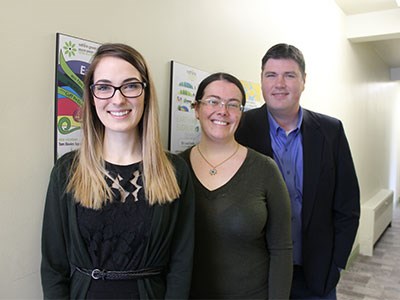By all accounts, going green is the socially conscious thing to do, but now it may be the business savvy direction to take too.
A new Sudbury program is seeking to help local businesses harness the practical benefits of becoming greener.
“We want to show the competitive advantage of being more sustainable,” said reThink Green's executive director, Rebecca Danard.
ReThink Green, a local non-profit sustainability networking group, launched Green Economy North in April, with Sudbury miner Vale as a founding partner. It is a membership-based initiative in which businesses set at least one sustainability-related target for themselves, a typical example would be to reduce greenhouse gas (GHG) emissions by 20 per cent over 10 years.
The program joined seven others that are part of the Sustainability CoLab network – which spans Ontario and includes Durham, Ottawa, Niagara, Hamilton, Kingston, Waterloo, and the York Region. Other CoLab communities have membership retention rates around 90 per cent, and have collectively resulted in the reduction of 290,000 tonnes of GHG emissions by participants since 2009.
This northern extension is being supported by a $315,000 grant from the Ontario Trillium Foundation. Danard said it is the second largest Trillium grant ever received for this territory.
He anticipates most of the targets will revolve around carbon emissions, largely to mitigate risk and prepare for anticipated environmental policies around carbon over the next few years.
“The current policy regime is pushing sustainability,” said Richard Eberhardt, the program's manager. “We will have the capacity if new incentives are introduced to help members access them, and clients will be impacted less.”
Vale's manager of the environment and air Frank Javor said, as a large company, they will be hit hardest but that the cost will trickle down, impacting even the smallest businesses.
“Putting a price on carbon and creating tough regulations is top on the Ministry of Environments’ agenda,” said Javor. “There will be some monies to be saved by becoming more energy efficient.”
Another benefit – less quantifiable, but still valuable – will be the businesses' ability to market themselves as green.
“There will be consumers who want to do businesses with businesses that are greener than others,” explained Javor. “The first part is establishing yourself, and drawing a line in the sand and saying, I'm going to set a target about this.”
However, Danard emphasized that the program isn't simply a form of green branding, and that the targets will be front and centre, with public reporting and recognition events.
“We're building a community of people working together,” said Danard. “But we want businesses that are serious about taking steps, we provide tools, not just the networking.”
Networking is a major part of the program, but it also includes coaching, access to tools and resources and technical training sessions on topics like retrofitting a business with newer, efficient lighting.
A2S Associates Ltd. was one of the first businesses to sign up. The Sudbury-based structural engineering firm headed by Aaron Dent and Steve Cairns serves Northern and northwestern Ontario, and as a small business, they don't have the same time to put into energy analysis as a large company might.
“We're hoping that the Green Economy North program can do a lot of the legwork on the technical side of things to be able to give us the up-to-date information to cost effectively reduce our carbon footprint over time,” said Dent.
Danard said the program is scalable and can be adapted to businesses of any size. Membership fees range from $500 to $6,500 a year, based on the number of employees. Danard estimates current members are comprised of 55 per cent private business, 38 per cent public, and 11 per cent non-profit.
Javor said the variety of businesses is essential to the program.
“Since we are the biggest member, and are definitely captured by the regulation, we thought we brought something a little different to the table in terms of experience. We have info and data that little businesses wouldn't,” said Javor. “But it's sometimes the small guys who have the really innovative ideas, it's not that we're just giving as a big brother, we're hoping to learn some things as well.”




